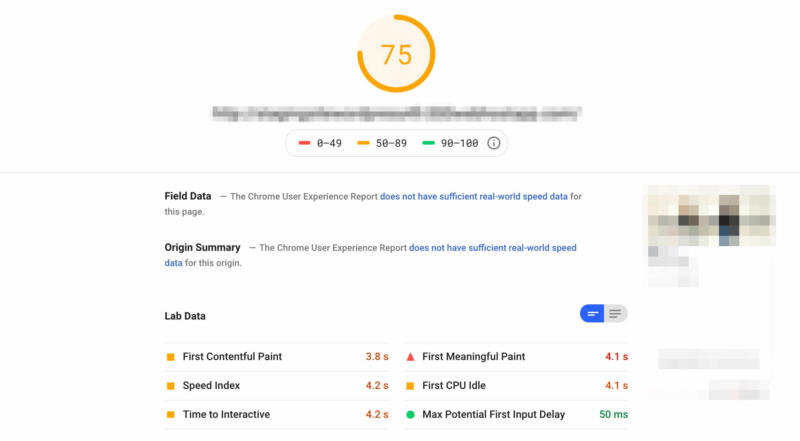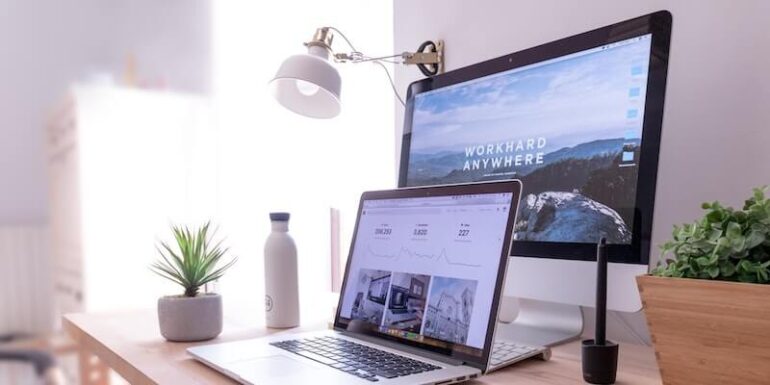- May 05, 2020
 0
0- by A2 Marketing Team
The COVID-19 pandemic has led to many unexpected changes across the globe. As businesses have been forced to close their physical locations due to social distancing guidelines, having a professional and reliable website has become more important than ever.
Making sure your site is in top form will help you adapt quickly to these new circumstances so you can continue bringing in revenue. A professional online presence will help reassure your loyal customers that you’re still here for them.
In this post, we’ll discuss why you might want to take a close look at your business website right now. Then we’ll share five tips for revamping it. Let’s dive in!
Why Your Business Site May Need an Update for the COVID-19 Pandemic
In an effort to slow the spread of COVID-19 countries around the world are encouraging people to stay home as much as possible. Many non-essential businesses have been forced to temporarily close. Since customers can’t shop in person, many of them are now going online for their favorite products.
If your business is one of the many that are currently closed or receiving very few customers, having an updated website is key to reaching your loyal shoppers. However, for business owners focusing mostly on in-person interactions, your website may be lacking features for web-based operations.
Additionally, if you have a modern website but haven’t updated it recently, its content may no longer be accurate or relevant. Plus, a lack of ongoing website maintenance may have resulted in poor Search Engine Optimization (SEO) or slow-loading pages.
In addition, a sudden increase in visitors could lead to performance issues or even crash your website’s server. Carrying out a COVID-19 audit and revamp of your website can help you avoid these situations and keep serving your customers even while your brick-and-mortar location is temporarily shuttered.
How to Revamp Your Business Site for COVID-19 (5 Key Tips)
If it’s been a while since you took a close look at your business website, it could probably use a little updating. Here are five tips to help you make sure your online presence appears professional and reliable.
1. Optimize Your Site’s Speed
Loading time can be a serious pain point. If your website is slow, your visitors may become frustrated and leave rather than wait around.
Even if you’ve previously optimized your website’s loading times, performance degrades over time and requires regular maintenance. For this reason, it’s smart to check your site’s current loading times using a platform such as Pingdom Tools or Google PageSpeed Insights:

This will give you an idea of where your site currently stands, as well as suggestions on specific areas for improvement. Some common strategies for improving your loading times include:
- Optimizing your images for the web
- Implementing browser caching
- Using a Content Delivery Network (CDN) such as Cloudflare
Your hosting plan can also influence your site’s performance, as we’ll discuss momentarily.
2. Assess Your Hosting Plan and Consider Upgrading
Many small local businesses are able to host their sites just fine on inexpensive shared servers. However, as we mentioned earlier, a sudden traffic spike could crash your server if it’s not set up to handle a large volume of visitors.
Fortunately, there are warning signs that can indicate your hosting plan is due for an upgrade before you reach this point:
- Slow loading times that aren’t resolved after you carry out other speed optimization strategies
- A significant increase in website traffic according to Google Analytics or other data you’ve collected
If your website is on a shared hosting plan, you might want to consider moving to Managed WordPress or Virtual Private Server (VPS) hosting.
Fortunately, at A2 Hosting, we provide both of these types of plans at affordable rates. Our Managed WordPress packages start at just under $12 per month, and you can get your own VPS for just $25 per month.
3. Improve Your Site’s SEO
Search engines are likely to be the primary way your customers find your website. When they Google your business’ name, you want to make sure your online content is the first result they see.
This requires some work in the form of SEO. There are many techniques that go into optimizing your site for search engines, but some of the most common include:
- Incorporating keywords on your website, such as your business’ name and location
- Using SEO-friendly page titles that clearly describe what your pages are about
- Writing meta descriptions for your content so users can see a short explanation of your page in Google
- Adding alt text to your images so search engines can index them properly
- Creating internal and external links throughout your website to help visitors navigate it
For small businesses, local SEO is also a smart strategy. If your site is built on WordPress, there are several plugins you may want to look into that can help provide suggestions on how to improve your content, too.
4. Update Content for Accuracy and Relevancy
Beyond the more technical updates your site may require, it’s also important to go through your pages and make sure they’re still accurate and relevant to your business and customers. Some examples of how this might play out include:
- Changing your store hours to reflect new COVID-19 operations
- Checking your contact information (phone number, email address) to ensure it’s accurate
- Updating any branding (logo, tagline) that has changed since you launched your site
- Replacing any outdated statistics or facts you’ve cited
- Testing all your links to ensure they lead to live pages
For business sites that include just a few key pages, this process shouldn’t be too difficult. If your site also includes an active blog, you may want to consider launching a full content audit.
5. Move Your Products or Services Online
Finally, if you’ve been struggling to maintain your revenue during COVID-19-related shutdowns, you may want to consider moving your products or services online. This will enable you to continue driving sales despite not being able to serve customers in person.
Launching a full online store is a big commitment, especially once you factor in updates to your digital marketing strategy and setting up shipping procedures. However, this change could pay off not only during the current extreme circumstances, but in the long run as well.
An online store enables you to reach a wider audience and build a national – or even international – audience. With this in mind, some steps you can take to get started include:
- Adding e-commerce functionality to your website using a plugin such as WooCommerce.
- Creating product pages for your merchandise.
- Setting up a few reliable payment gateways, such as PayPal and Stripe.
- Deciding how you will ship orders to customers and what you will charge for shipping.
- Launching a digital marketing campaign to announce your new online format.
This process does require a significant investment of your time. However, if you’re unable to open your doors at the moment, you may have plenty of time on your hands anyway. Overall, it’s better to be productive, than to simply sit still.
Conclusion
A pandemic is a scary and unpredictable situation. Many businesses have had to quickly adapt in order to keep their doors open (figuratively speaking). Your website is the central hub of your online presence, so getting it in working order is key during these strange times.
In this post, we shared five ways you can improve your site and continue serving your customers during the COVID-19 crisis:
- Optimize your site’s page speed.
- Assess your hosting plan and consider upgrading.
- Improve your site’s SEO.
- Update content for accuracy and relevancy.
- Move your products or services online.
Image credit: Unsplash.












